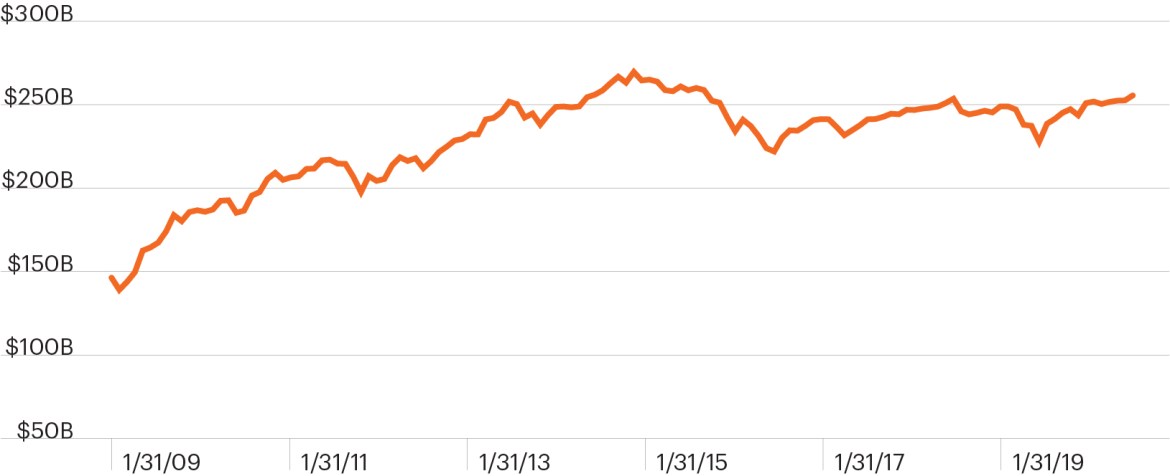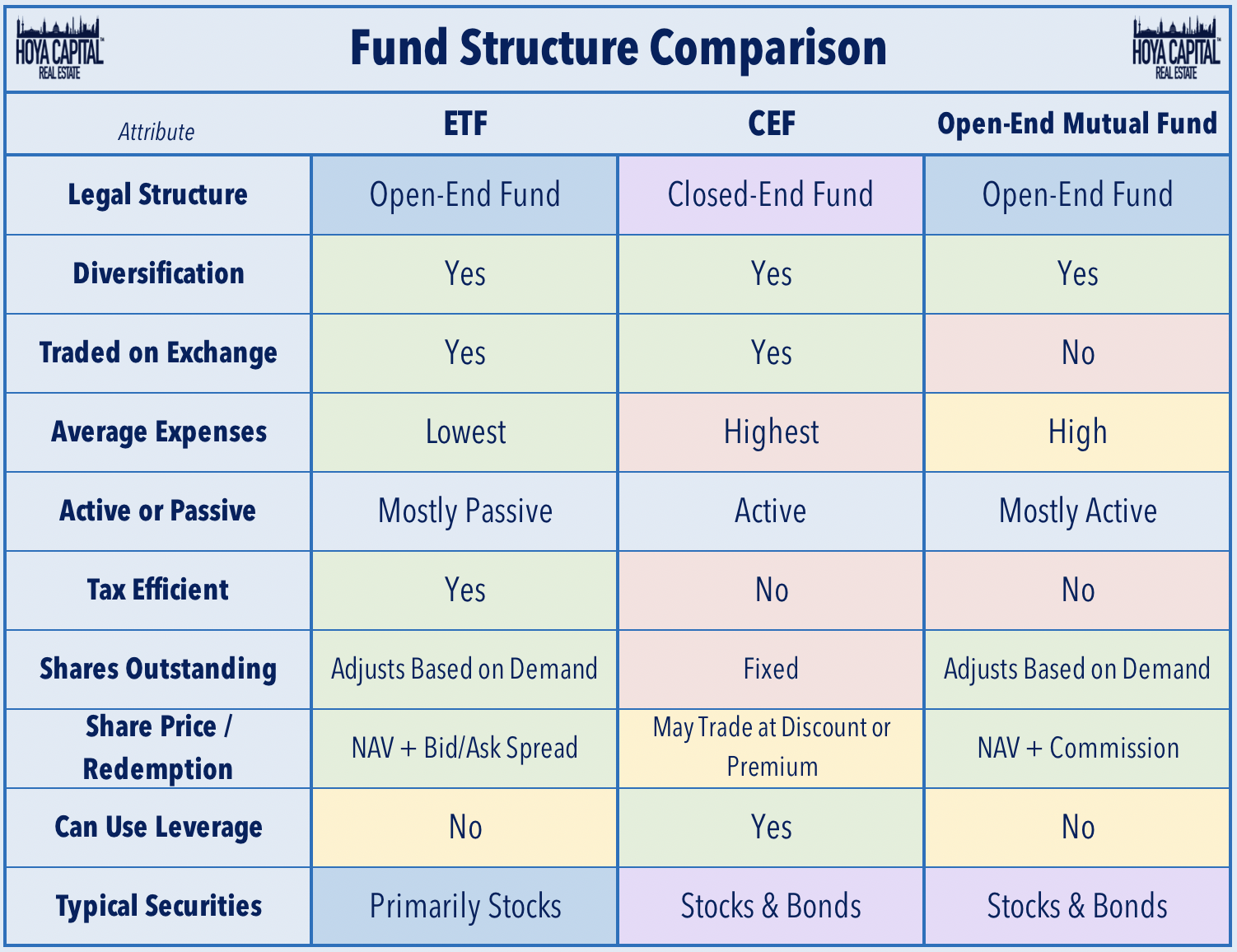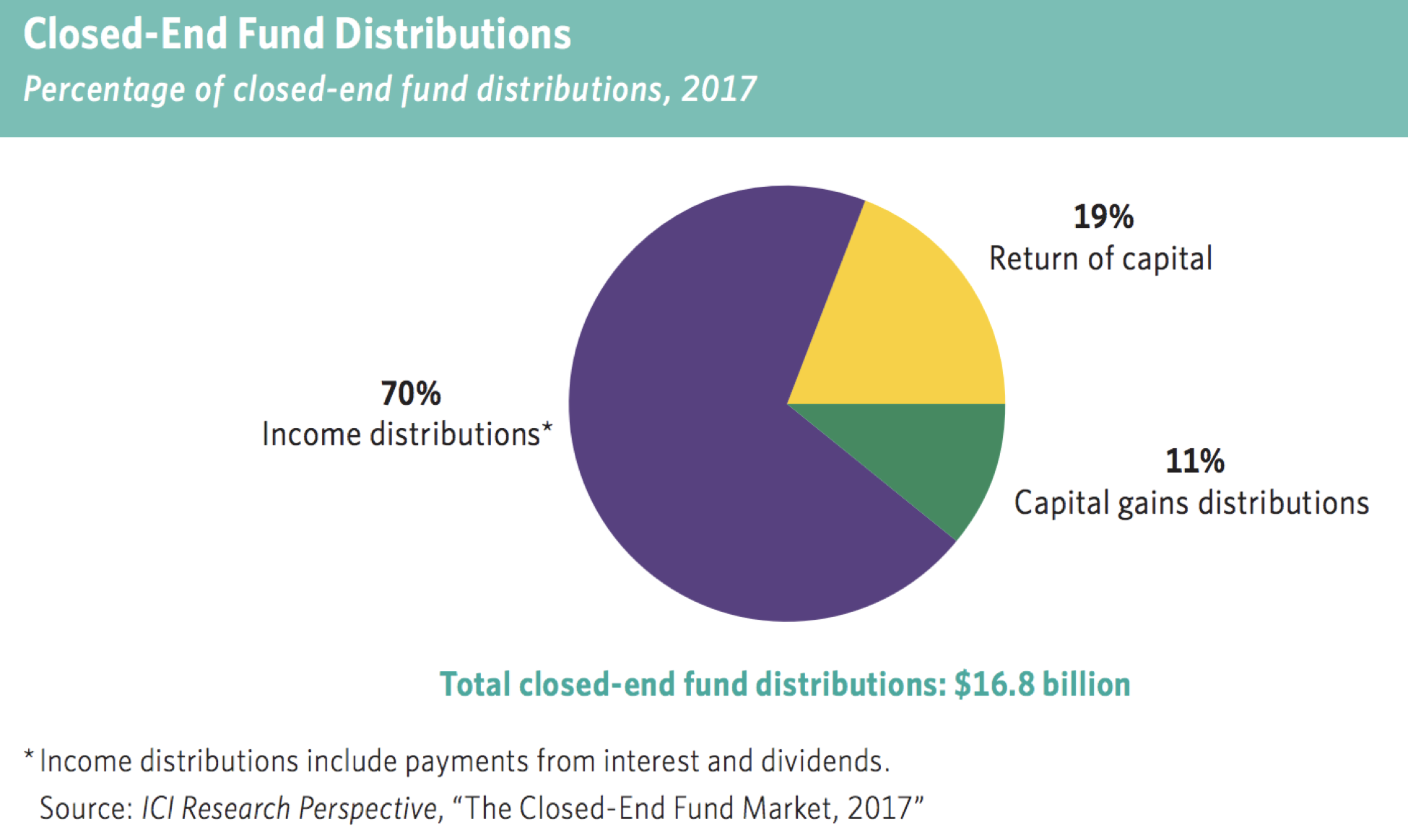do closed end funds have liquidity risk
Closed-end funds have the ability subject to strict regulatory limits to use leverage as part of their investment strategy. Changes in interest rate levels can directly impact income generated by a CEF.

Tourshabana What Are Closed End Vs Open End Mutual Funds Compare 4 Key Differences In Investing
Closed-end funds CEFs can be one solution with yields averaging 673.

. There are many varieties of closed-end funds. In other words it could be harder to buy and sell the stock at desirable prices depending on how many people are willing to take the other side of your trade. This can lead to superior investment results.
Individual investors and endowments may have different investment horizons liquidity needs and risk tolerances. Closed-End Funds Trading Price and NAV Net asset value NAV is an investment funds. Also low trading liquidity can be an issue with some CEFs making it difficult to buy or sell many shares without unfavorably moving the price.
Closed-end funds do not have this restriction. Closed-end funds raise a certain amount of money through an initial public. Okay this is it.
In this case the closed-end fund sells at a discount of 2 per share. Non-listed closed-end funds and business development companies do not offer investors daily liquidity but rather offer liquidity on a monthly quarterly or semi-annual basis often on a small percentage of shares. It also makes the closed-end fund structure advantageous for investing in specialized areas such as less liquid securities or markets venture capital opportunities real estate and private placements.
In this way managers of closed-end funds do not have to manage investor redemptions like that of open-end mutual fund managers especially during periods of market volatility. The closed-end structure Mark Northway explains provides the manager with the benefit of permanent or long-term committed capital while listing the funds shares allows investors to enjoy liquidity albeit at a premium or discount to net asset value. Buying a Closed-End Fund at a Discount.
On a percentage basis the fund sells at a discount of 10 2 divided by 20. Less liquid than open-end funds Available only through brokers May get heavily discounted Closed-End Funds and Net Asset Value NAV Its pricing is one of the unique characteristics of a closed-end. This provides the benefit of liquidity and the convenience of being able to track an investment with its assigned ticker.
The value of a CEF can decrease due to movements in the overall financial markets. Fees reduce returns on fund investments and are an important factor that investors should consider when buying shares. This can result in.
Initial offering Like a company going public a closed-end fund will. Closed-end fund definition. Ad Learn why mutual funds may not be tailored to meet your retirement needs.
Just like open-ended funds closed-end funds are subject to market movements and volatility. Any day when theres a 1 move in a CEF can be thought of as a day when there is a supply and demand imbalance outside of ex-dividend days and large moves in. New SEC Rule Requires Open-End Funds to Have Formal Liquidity Risk Management Programs.
When the Investment Company Act was enacted it was understood that redeemability meant that an open-end fund had to have a liquid portfolio. Their yields range from 632 on average for bond CEFs to. Get this must-read guide if you are considering investing in mutual funds.
Closed-end funds can be subject to liquidity problems both at the level of the fund and at the level of the shareholders Faust says. Yet most experts caution against doing just that. Funds or funds4 or closed-end upon which several of the Acts other provisions depend turns on whether the investment companys shareholders have the right to redeem their shares on demand.
7 hours agoDays of record market losses may inspire 401 k investors to take action. But shares of closed-end funds are less liquid as your ability to sell is limited by available market demand. Because CEF transactions occur between investors closed-end funds trade at a market price that is typically at a premium or discount to the NAV of the fund.
Closed-end funds often use leverage which can increase the funds volatility ie risk. Days when the markets are down tend to be closely followed. Since closed-end funds are a much smaller asset class than open-end mutual funds ETFs and stocks some of them have much less trading liquidity.
Each may have different investment objectives strategies and investment portfolios. This lack of liquidity is a real cost when buying and selling assets especially during times of market stress and efficient markets practitioners like Malkiel would suggest that the closed-end fund discount is the true cost of the liquidity of getting in and out of these funds. This flexibility means closed-end funds possess the ability to invest in less liquid companiescompanies that may offer growth potential over the long.
The use of leverage allows a closed-end fund to raise additional capital which it can use to purchase more assets for its portfolio. Closed-end funds can offer opportunities but they come with risks Not nearly as popular as open-end mutual funds they provide advantages for long-term investors who can stomach some volatility. If the market price is above NAV say 21 in this case then the closed-end fund sells at a premium of 5.
Regardless of the trading volume or market price fluctuations in such areas closed-end fund. In addition fees that may be incurred by an. Closed-end funds can offer opportunities but they come with risks Not nearly as popular as open-end mutual funds they provide advantages for long-term investors who can stomach some volatility.
Lets assume that the market price is 18 per share and that NAV is 20. They also can be subject to different risks volatility and fees and expenses. Closed-end funds CEFs can play an important role in a diversified portfolio as they may offer investors the potential for generating capital growth and income through investment performance and distributions.
A closed-end fund or CEF is an investment company that is managed by an investment firm. For a hedge fund industry that surged 66 last year to end up with 61 trillion yuan 903 billion of assets under management its been.

Difference Between Open Ended And Closed Ended Mutual Funds Differbetween

The Problem With Open Ended Life Settlement Funds Articles Advisor Perspectives

A Guide To Investing In Closed End Funds Cefs Intelligent Income By Simply Safe Dividends

Closed End Fund Fs Investments

Closed End Fund Definition Examples How It Works

Investing In Closed End Funds Nuveen

What Are Mutual Funds 365 Financial Analyst

Real Estate Cefs Satisfying A High Yield Fix Seeking Alpha

A Guide To Investing In Closed End Funds Cefs Intelligent Income By Simply Safe Dividends

Understanding Types Of Mutual Funds

Closed Vs Open Ended Funds Which One Do I Pick Mutual Funds Etfs Trading Q A By Zerodha All Your Queries On Trading And Markets Answered
What Is The Difference Between Closed And Open Ended Funds Quora

Alternative Mutual Fund Liquidity Spectrum Investment Comparison

Open Ended Mutual Fund Vs Close Ended Mutual Fund What To Prefer

A Guide To Investing In Closed End Funds Cefs Intelligent Income By Simply Safe Dividends



